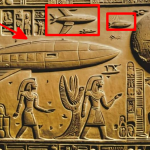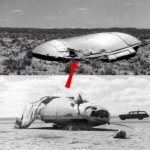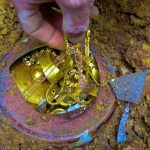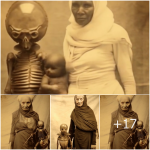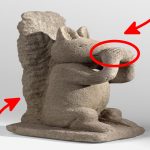A life-sized horse head made of gilded bronze that was discovered in a well in the Roman town of Waldgirmes (4 BC – 16 AD)
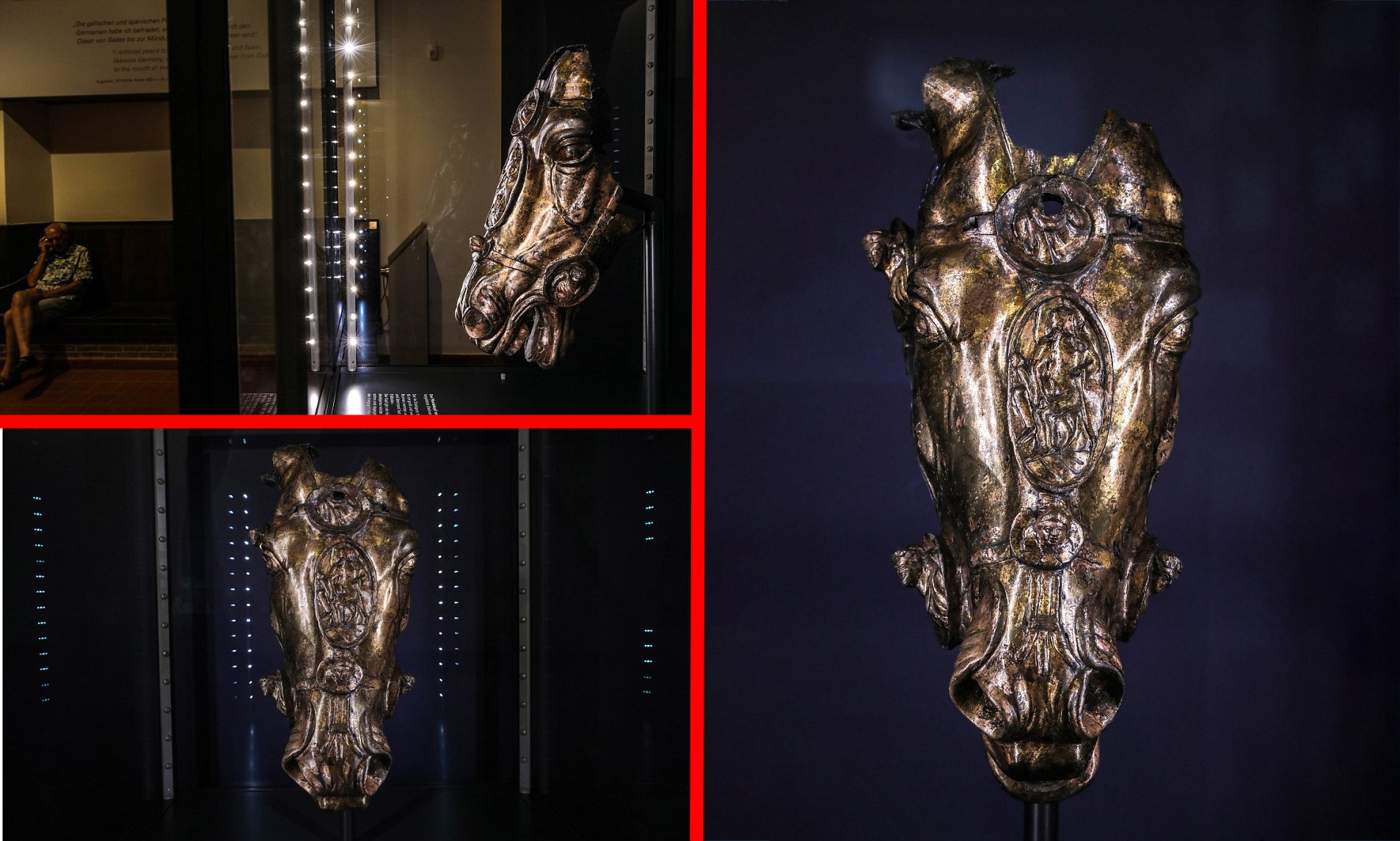
The discovery of a life-sized horse’s head made of gilded bronze in the Roman settlement of Waldgirmes is a remarkable find that sheds light on the artistic, cultural, and historical context of the region during its occupation from 4 BC to 16 AD. This extraordinary artifact is not only a testament to the skilled craftsmanship of the Roman period but also provides valuable insights into the significance of equine imagery in Roman society.
Waldgirmes, located in present-day Germany, was an important Roman settlement during the early imperial period. Established around 4 BC, it served as a key administrative and military hub in the region until it was abandoned in 16 AD. The settlement featured a forum, various public buildings, and a well-planned urban layout, reflecting the Roman efforts to consolidate their presence in the Germanic territories. The discovery of the horse’s head in a well within this settlement indicates the potential ritualistic or symbolic importance of the object.
The horse’s head, crafted from bronze and covered in gold leaf, represents a high level of artistic achievement. The life-sized sculpture captures the powerful and noble essence of the horse, an animal highly revered in Roman culture. The gilding process, which involved applying a thin layer of gold over the bronze, not only enhanced the visual appeal of the sculpture but also signified wealth and prestige. This suggests that the horse’s head likely belonged to a prominent public monument or equestrian statue, possibly honoring a military leader or an imperial figure.
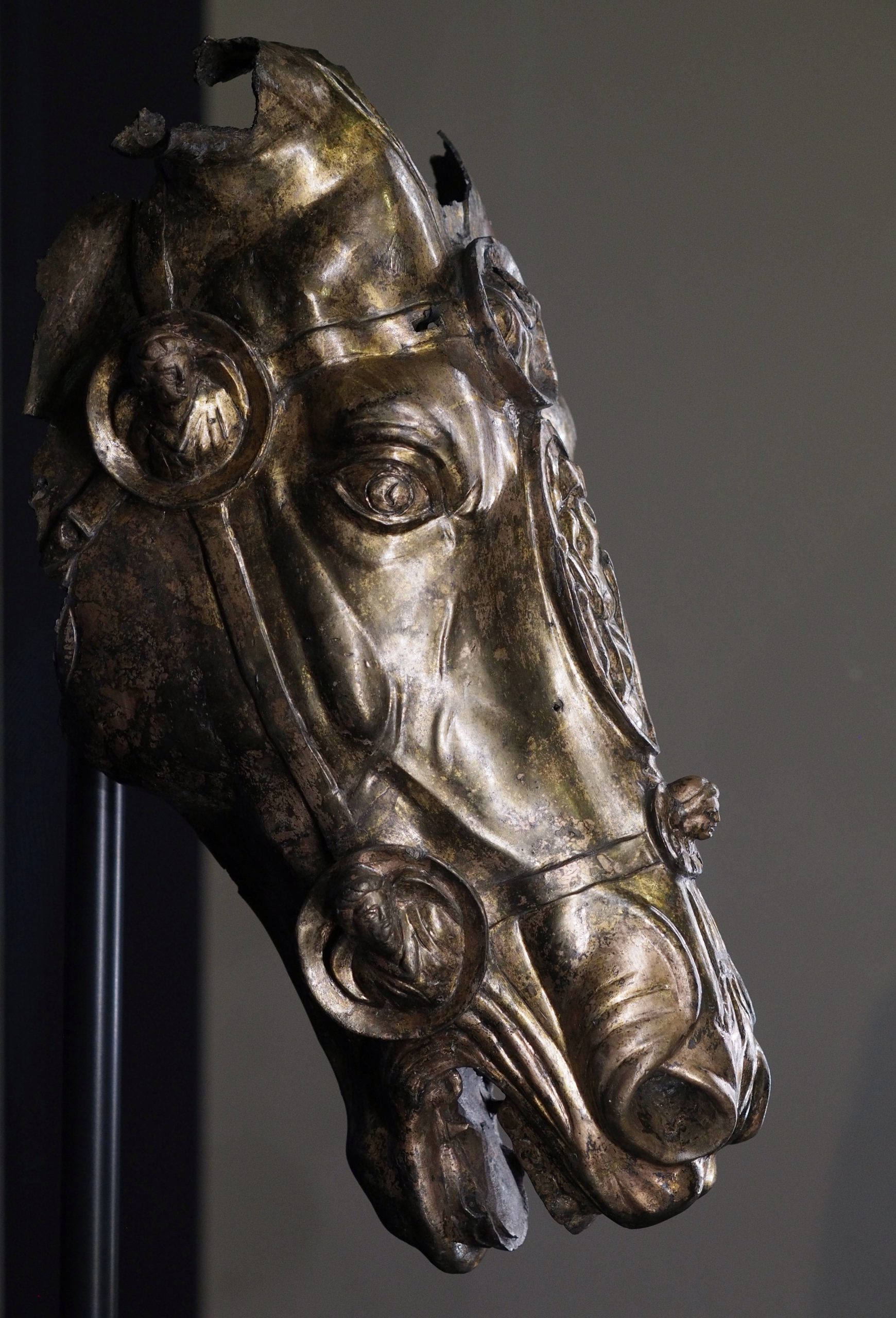
Equine imagery held significant symbolic value in Roman society. Horses were associated with strength, power, and nobility, and they played a crucial role in both civilian and military life. In the military context, horses were essential for cavalry units and chariot races, which were popular spectacles in Roman entertainment. The presence of a gilded bronze horse’s head in Waldgirmes indicates the importance of such imagery in asserting Roman authority and celebrating their military prowess in the newly established settlement.
The context of the discovery – in a well – adds an intriguing dimension to the artifact’s history. Wells were often used for practical purposes, but they could also serve as places for votive offerings or symbolic deposits. The placement of the horse’s head in the well might indicate a deliberate act, possibly related to a ritual or as a protective measure during a time of crisis. It could have been hidden to safeguard it from invaders or buried as an offering to the gods, seeking favor or protection for the settlement.
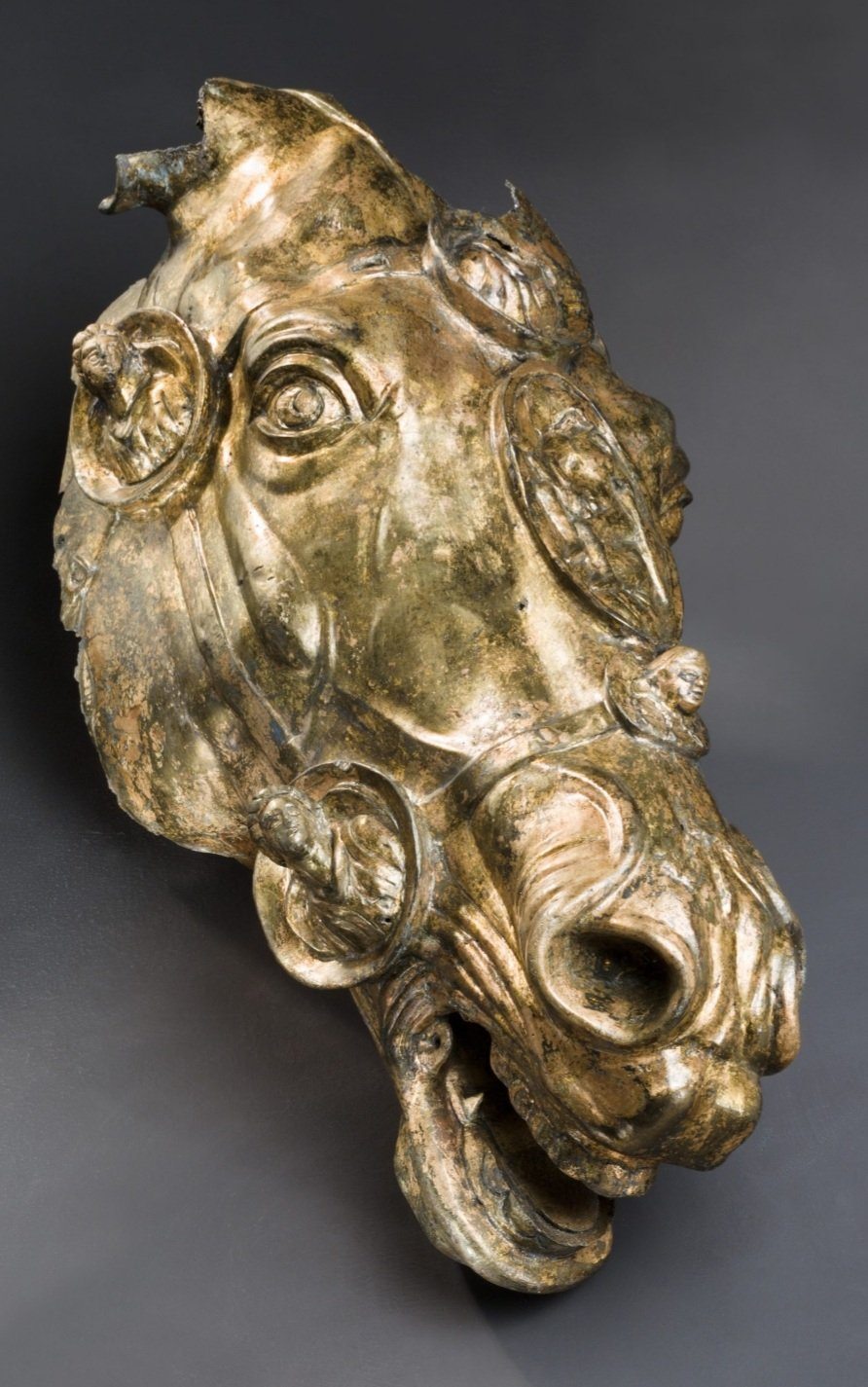
The Waldgirmes horse’s head also provides valuable information about the spread of Roman culture and artistic practices beyond the core territories of the Roman Empire. The high-quality craftsmanship and the use of gilding techniques demonstrate the transmission of artistic skills and technologies across the empire. It highlights the interconnectedness of the Roman world, where local artisans in provincial settlements could produce works that matched the sophistication of those created in Rome itself.
In conclusion, the life-sized gilded bronze horse’s head discovered in the Roman settlement of Waldgirmes is a fascinating artifact that offers a glimpse into the artistic, cultural, and historical landscape of the early Roman Empire. Its exquisite craftsmanship and symbolic significance underscore the importance of equine imagery in Roman society and reflect the broader themes of power, prestige, and cultural exchange. The context of its discovery adds an element of mystery and suggests potential ritualistic practices within the settlement. This remarkable find enriches our understanding of Roman provincial life and the enduring legacy of Roman art and culture.




